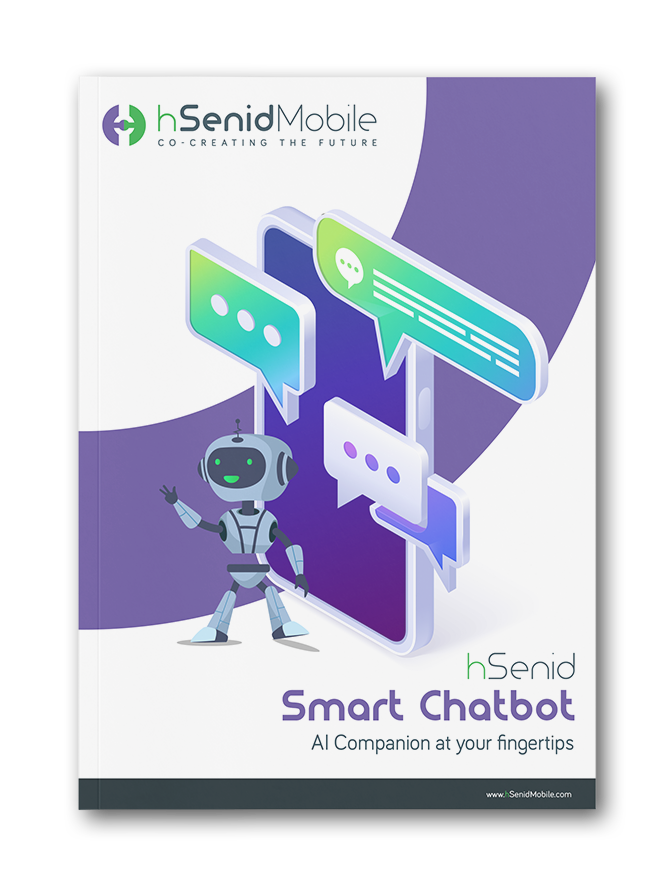In the present day, there is no doubt that the deployment of AI in business
operations is gaining popularity, with research finding that
42% of enterprise-scale companies surveyed use AI in some form.
Among these AI technologies, enterprise AI chatbots that support prompt live
agent transfer and win the hearts of customers who wish to interact with a
human representative in real-time. The amount of potential buyers who fit this
condition is surprisingly huge, with more than
80% willing to use a bot if they can get in touch with an agent quickly.
Although
smart AI chatbots
intelligently deliver contextually relevant responses, some potential buyers
would still opt for a strong second opinion in the form of human assistance.
Unlike chatbots, trusting human knowledge comes easy and naturally, and
complex issue resolution demands more than just personalized, detailed
responses that are beyond the bot’s expertise. In essence, live agent transfer
improves user experience while bringing significant value to company
operations, as highlighted throughout this blog.
Studies also prove that 83% of consumers prefer to interact with human agents over chatbots which demonstrates the importance of integrating a live agent transfer feature integrated chatbots on channels with the most customer interactions. A human agent must handle such queries that require specialized attention, critical analysis and thinking, as well as decision-making flexibility to offer tailored business solutions that are compatible with the requirements of potential buyers.
The live agent serves as a middleman in the customer journey, and once convinced by the agent’s direction and support, the potential buyer will make the ultimate choice to purchase the product. By implementing the hSenid Smart Chatbot, enterprises may secure possibly missed revenues due to the lack of live agent chat while also responding to the different interaction preferences of a vast client base catering to those who prefer conversing with a bot and agent, resulting in increased successful conversions.
Moreover, customers can enjoy the ease of rapid responses while also benefiting from the prompt intervention of a live person, hence improving the overall responsiveness and efficacy of customer service engagements.
To escalate conversations with these users across multiple channels, from websites to social media, and alleviate their frustration, it’s critical to implement a chatbot that supports live agent transfer, as studies clearly show that customer satisfaction ratings for live chat (85%) are second only to phone support (91%), outperforming help center articles (83%), email support (82%), Twitter support (81%), and Facebook support (74%). Live agents right away understand the situation of the user, the struggles they are undergoing, their current emotions and what they expect to effectively solve their problems. Thereby, users will feel valued and understood, where they will have a more positive perception of the brand and its customer service, dispelling any initial preconceptions.
What is Live Agent Transfer?
Live agent transfer, also known as human handoff, occurs when a potential buyer converses with a bot and then requests or requires assistance from a live agent. The bot then activates the live agent transfer option, which redirects the chat to a live agent who will connect with the customer on the chat. The human agent will then resolve the customer’s query in a specialized and adaptable manner.Resolves Complex Issues
Chatbots respond to more than 80% of typical client concerns. NLP and AI/ML algorithms enable the bot to interpret and generate personalized and relevant responses based on user intent, language, and style; however, despite having such great power, chatbots lack flexibility due to the absence of critical situation analysis and decision-making power to adjust business offerings to meet the specific needs of clients, so they are unable to fully commit to and align with all customer scenarios and find solutions to these pressing concerns.Studies also prove that 83% of consumers prefer to interact with human agents over chatbots which demonstrates the importance of integrating a live agent transfer feature integrated chatbots on channels with the most customer interactions. A human agent must handle such queries that require specialized attention, critical analysis and thinking, as well as decision-making flexibility to offer tailored business solutions that are compatible with the requirements of potential buyers.
The live agent serves as a middleman in the customer journey, and once convinced by the agent’s direction and support, the potential buyer will make the ultimate choice to purchase the product. By implementing the hSenid Smart Chatbot, enterprises may secure possibly missed revenues due to the lack of live agent chat while also responding to the different interaction preferences of a vast client base catering to those who prefer conversing with a bot and agent, resulting in increased successful conversions.
Convenient and Instant Responses
According to recent data, 73% of customers are satisfied with their live chat experiences. Customers find traditional communication channels, such as phone calls, difficult and time-consuming. On the contrary, live chat allows clients to ask for assistance without having to pick up the phone or quit working on their present activity. This seamless shift from chatbot to live agent occurs within the chatbot discussions itself, eliminating the need for clients to contact the agent via a separate channel or go back and forth between channels.Moreover, customers can enjoy the ease of rapid responses while also benefiting from the prompt intervention of a live person, hence improving the overall responsiveness and efficacy of customer service engagements.
Humanness and Empathetic Touch
Some customers may encounter challenging or emotional situations where they may require personalized assistance alongside emotional understanding and support. Chatbots may provide personalized responses humanly, yet users don’t sense that human connection.To escalate conversations with these users across multiple channels, from websites to social media, and alleviate their frustration, it’s critical to implement a chatbot that supports live agent transfer, as studies clearly show that customer satisfaction ratings for live chat (85%) are second only to phone support (91%), outperforming help center articles (83%), email support (82%), Twitter support (81%), and Facebook support (74%). Live agents right away understand the situation of the user, the struggles they are undergoing, their current emotions and what they expect to effectively solve their problems. Thereby, users will feel valued and understood, where they will have a more positive perception of the brand and its customer service, dispelling any initial preconceptions.








